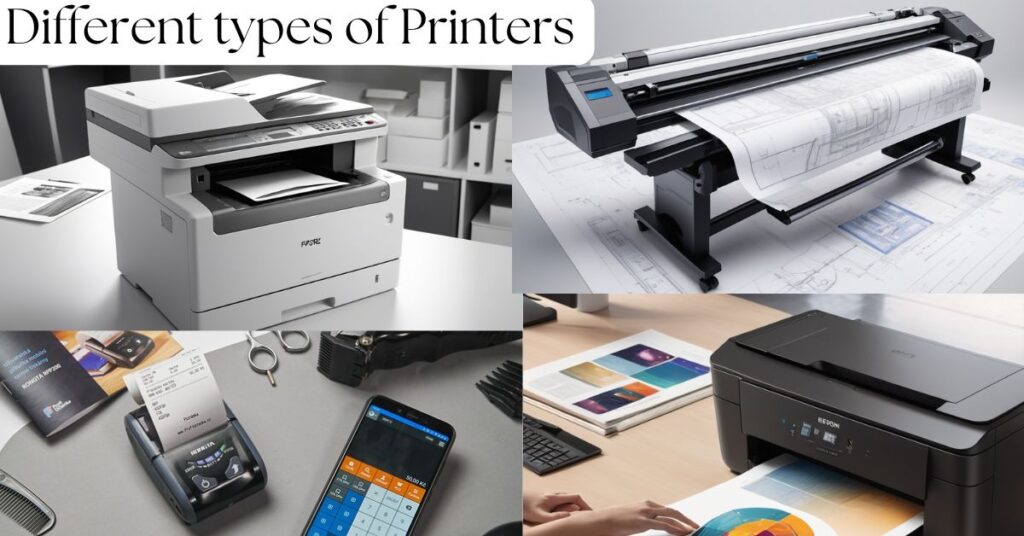So, lets take a closer look at the different types of printers. From home to industry, printers are critical for many applications. There are several types, each with its own purpose. We will look at the various printer types, things they use for, pros and cons, to guide you in selecting a suitable printer as per your requirement.
1.Exploring Inkjet Printers: Popular Among Different Types of Printers
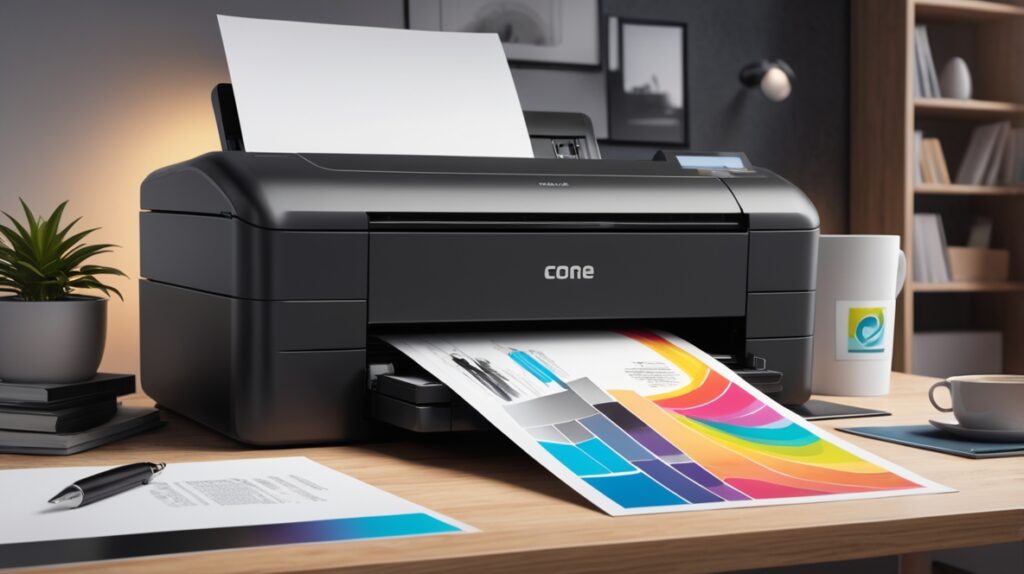
Overview:
Inkjet printers use small droplets of liquid ink that is sprayed onto paper to achieve high-quality images and text. They are widely used for domestic and office printing.
Uses:
- Home printing
- Small office work
- Photo printing
- School projects
Advantages:
- Affordable initial cost
- Decent print quality (mostly with photos)
- Compact size
- Ability to print in grayscale and in color
Disadvantages:
- Ink cartridges is pricey
- If you do not use the ink for sometime it dries out.
- Printing is slower than that of laser printers
2. Ink Tank Printers: Cost-Effective Options Among Different Types of Printers
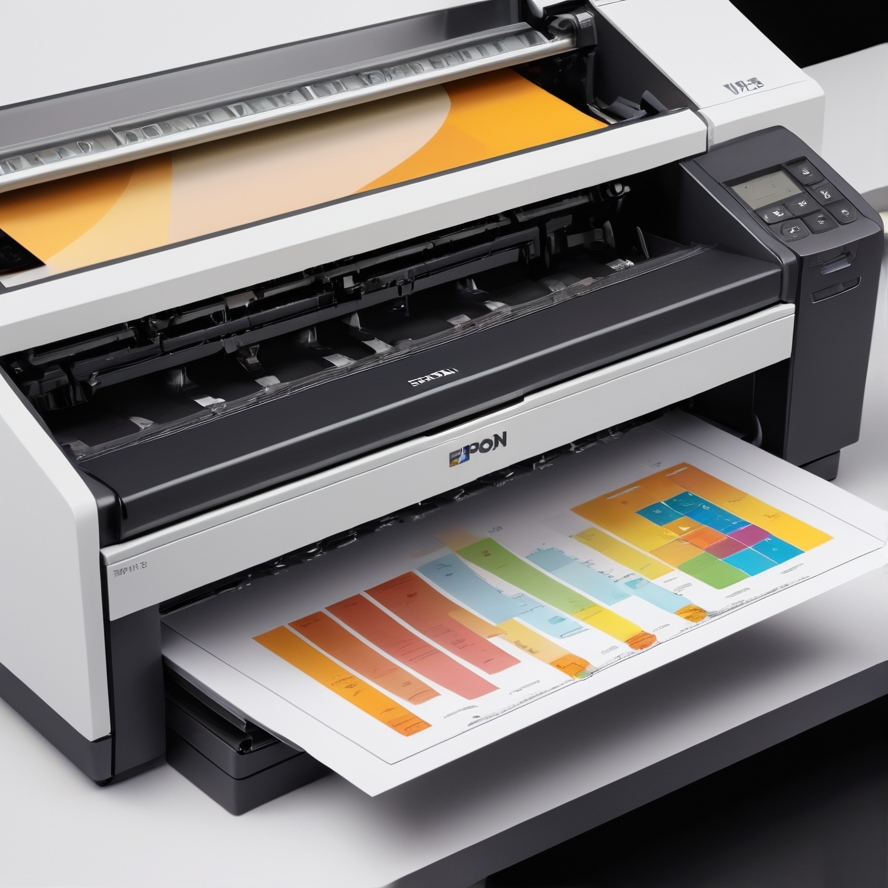
Overview:
To help you save a considerable amount of money, ink tank printers are advanced variants of inkjet printers that use large refillable ink tanks instead of traditional ink cartridges.
Uses:
- Home and office printing
- Schools and businesses
- Photo and document printing
Advantages:
- Cost per Page to Print an Average Page is Less than Compared to Regular Inkjet Printers
- Ink tanks that can be replenished last longer than cartridges
- Best color and black-and-white prints
- Ideal for bulk printing
Disadvantages:
- Price at which the upfront cost of the inkjet printer is higher
- At the same time, the ink refilling is messy if it is not done carefully.
- Printheads may become clogged if used rarely
3. Laser Printers: High-Speed Solutions Among Various Types of Printers
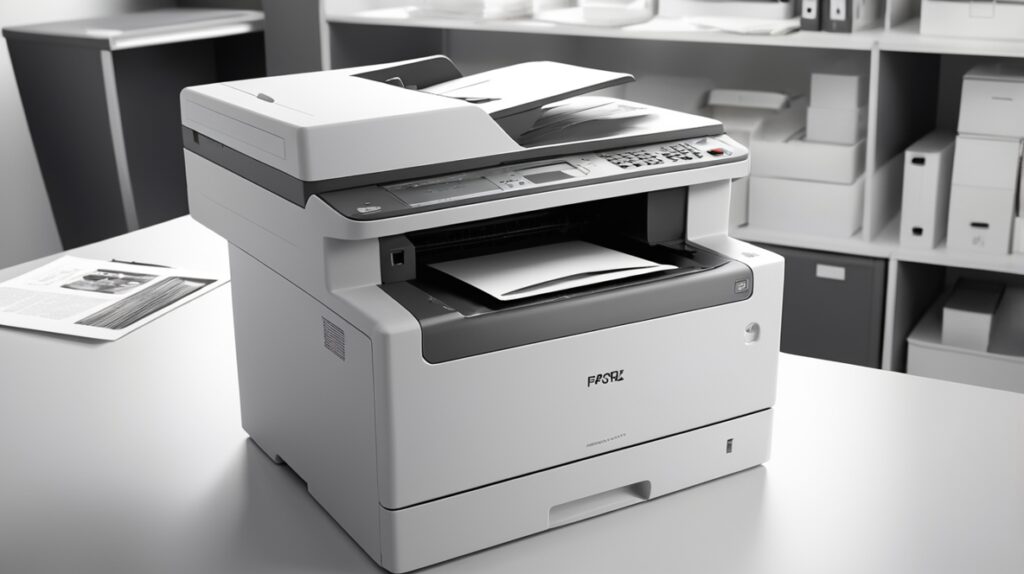
Overview:
In contrast, laser printers employ toner powder and a laser beam to fuse text and images onto paper, resulting in quick and efficient printing of high-volume work.
Uses:
- Polished, professional environments.
- Schools and colleges
- Printing services for legal and medical documents
Advantages:
- High-speed printing
- More economical per page than inkjet printers
- Smooth and crisp text printing
- Toner lasts longer than ink
Disadvantages:
- Expensive upfront cost
- Not a good choice for printing high-quality photographs
- Toners can be costly
4.Dot Matrix Printers: Classic Workhorses Among Various Types of Printers
Overview:
Instead of individual characters created from dots, dot matrix printers work by using tiny pins that hit an ink ribbon, creating characters and images.
Uses:
- Billing and invoicing
- Roll-to-roll printing workshops
Advantages:
- Print on multi-part forms (carbon copies)
- Low maintenance cost
- Long Lasting and Dependable
Disadvantages:
- Noisy operation
- Print quality cannot compete with modern printers
- Slow printing speed
5.Thermal Printers: Specialized Solutions in the World of Different Types of Printers
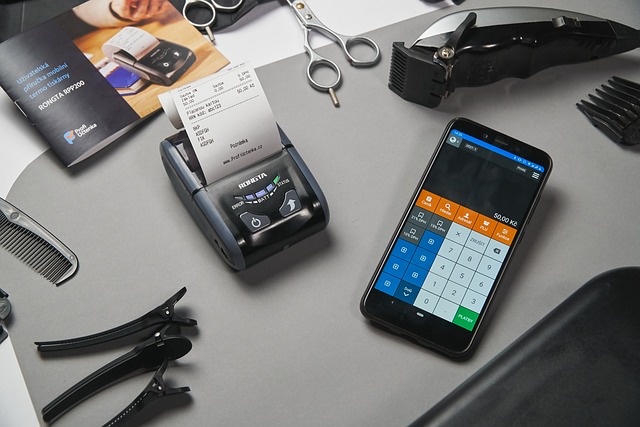
Overview:
Thermal printers, for example, apply heat to the ink to directly transfer the information on the paper, which is how most billing and ticketing systems work.
Uses:
- Retail stores(billing receipts)
- ATMs (bank statements)
- Label printing in logistics
Advantages:
- Fast printing speed
- Very few moving parts = less maintenance
- [Free of ink cartridges] (For direct thermal printers)
Disadvantages:
- Ink wears off (receipts especially)
- Restricted to black & white printing
- Thermal paper is required
6.Thermal Printers: Fast and Efficient Among Different Types of Printers
Overview:
Three-dimensional printers create three-dimensional objects, bit by bit, using strands of plastic, resin or metal.
Uses:
- Prototyping in manufacturing
- Medicine (Prosthetics, Implants)
- In or for educational and research purpose
- Hobbyists and DIY projects
Advantages:
- Capable of designing intricate three-dimensional structures
- Prototyping and Innovation friendly
- Less material waste than traditional manufacturing
Disadvantages:
- Costly machines and materials
- For big designs, this is slow.
- Needs technical skills to run
7.Plotter Printers: Large-Format Options Among Different Types of Printers
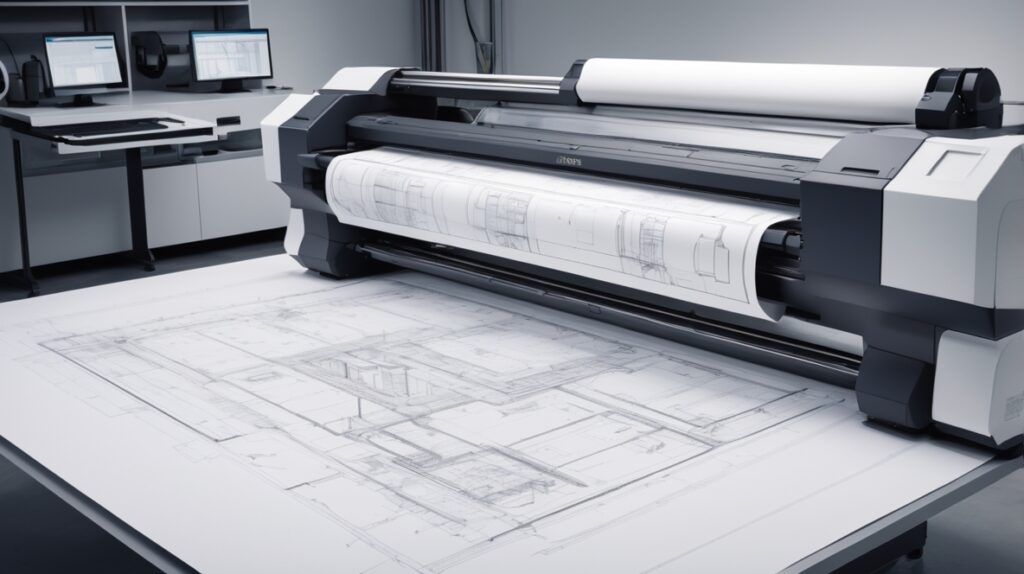
Overview:
Plotters are large-scale printers designed to print technical drawings and blueprints to an exactness required to accuracy.
Uses:
- Firms that design buildings and structures
- Banners and advertisement printing
- CAD designs and blueprints
Advantages:
- Accurate and high precision prints
- Use it for large format prints
- Capable of printing on various materials (vinyl, fabric, etc.)
Disadvantages:
- Expensive initial cost
- Requires large space
- Slow printing speed
Conclusion: Choosing the right printer
Which printer is best for you depends on your needs:
Inkjet Printers – Ideal for home & photo prints
Printers with ink tank – perfect for high-volume printing at a lower cost
Laser Printers – Excellent for offices, and speedy high-quality text printing
Dot Matrix Printers – Banks and Invoice printing
Thermal Printers – Mostly used in retail and ticketing applications
3D printers — a great tool for prototyping and design
Plotter Printers – A must have for architects and large format printing
Each has its own pros and cons, so pick based on your printing volume, quality requirements and budget.


